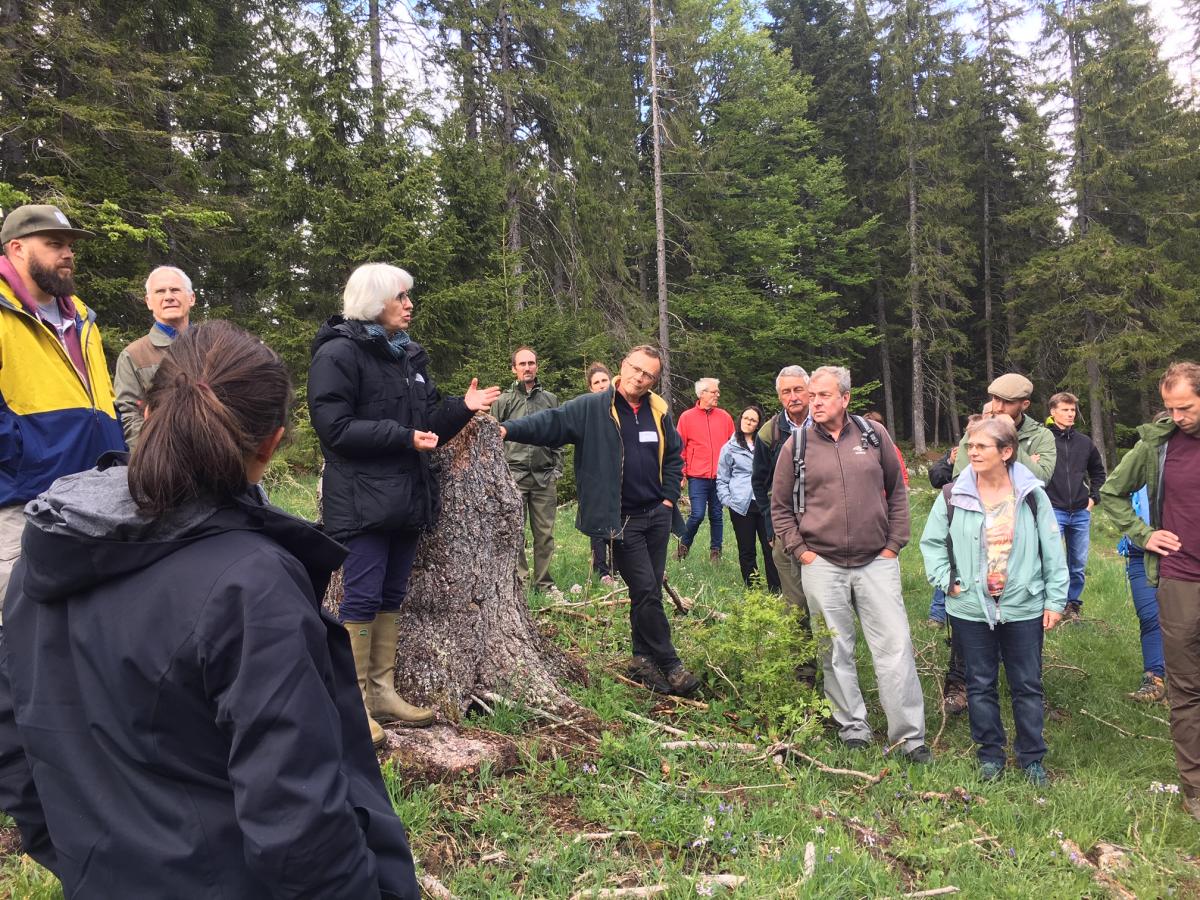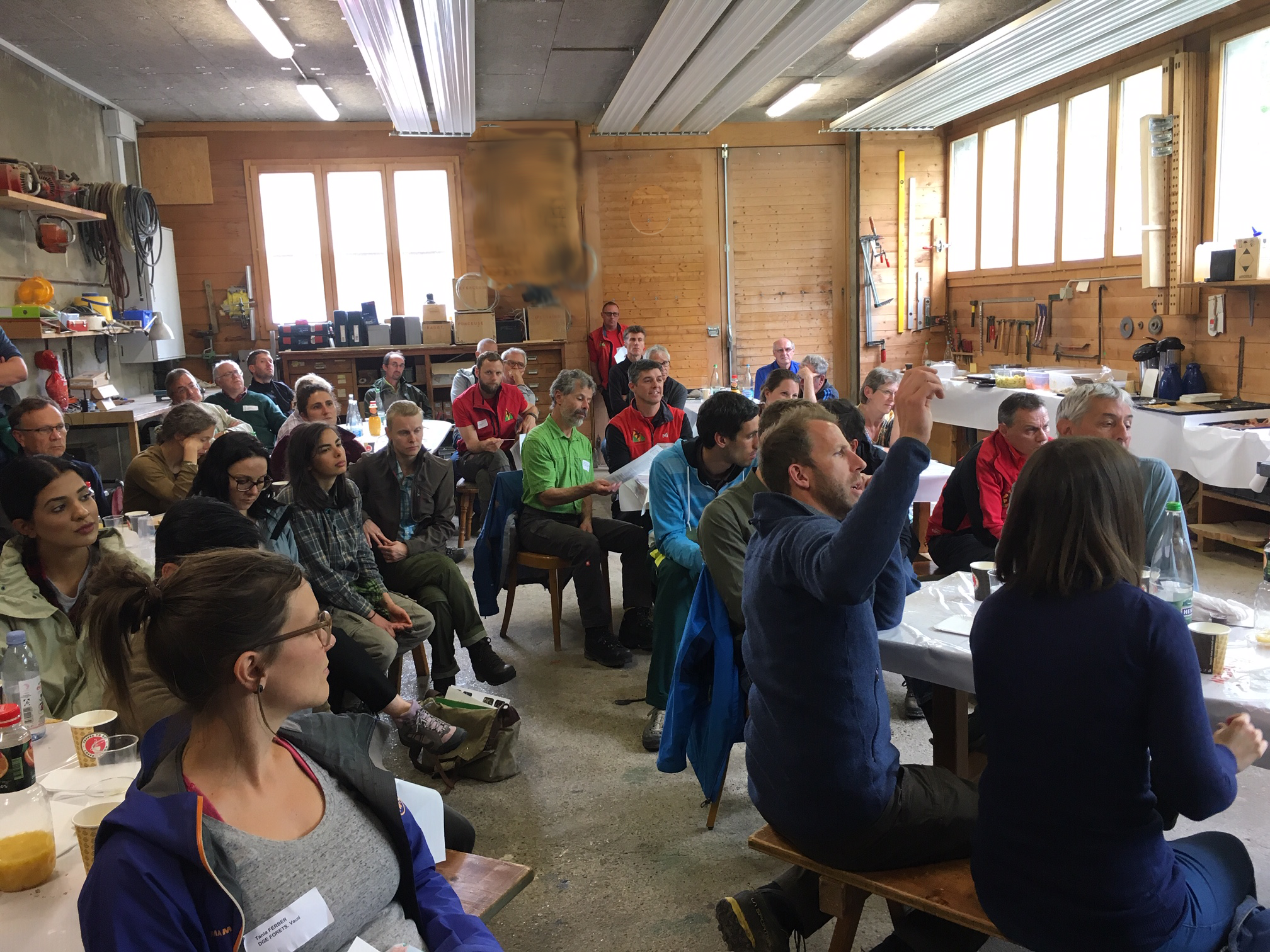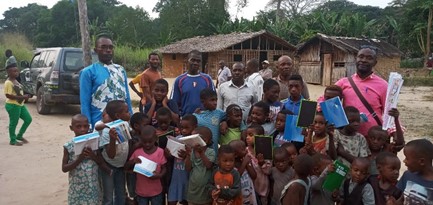Talking about forest reserves without needing to take a plane
As an international organisation that works all around the world, the importance of what we can learn and share with those managing the forests nearby is sometimes overlooked. This year, the Lake Geneva Forestry Forum (Forum Forestier Lémanique) was co-hosted by IUCN and Vaud Canton in Switzerland. Collectively, we learned that be it in Uganda, Switzerland or France, challenges and strategies for managing forest reserves tend to look much the same.

Photo: IUCN / Corbett Nash
Forests grow nearly everywhere, and the Lake Geneva region has some picturesque examples. IUCN headquarters near the lake in Gland, Switzerland had the pleasure of hosting local foresters from around the area to swap forestry practices and share regional stories and strategies from France and Switzerland. IUCN shared its own experiences with protected areas and through forest projects and forest stakeholder survey results in Uganda.
“It was really inspiring to see that the subject forest reserves brought so many people to the forum, and from such diverse backgrounds,” remarked Anne Golay, Head of Forest Conservation for Vaud Canton in Switzerland, which spans most of the north side of Lake Geneva. “Even though a lot of forest protected areas already exist, the Convention on Biological Diversity and Aichi target 11 definitively launched a new debate on their creation, management and inclusion in national strategies.”
During the forum, pros and cons of each of the strategies presented stirred complex debate. From an emerging French initiative presented by the National Office of Forests aimed at private landholders to incentivize conservation through natural regeneration – to a Swiss programme in a young reserve in Vaud emphasising sustainability through a voluntary reserve system in the hills above IUCN – to learning from community perceptions of two protected areas in Uganda, a common understanding of strategies, challenges and lessons were acknowledged and embraced. People live in and have rights to these landscapes, and conservation solutions are only possible when they take part in the decisions.
An afternoon visit to the local Petits Plats in the Jura Mountains highlighted the conflicting needs of forest preservation, wood use, grazing and biological diversity in a complex ownership structure.
 Photo: IUCN / Corbett Nash
Photo: IUCN / Corbett Nash
Even though governance systems over forests and reserves are largely effective, and the financial means to support forest reserves are likely to exist in Europe, many of the same issues presented from France and Switzerland ring true around the world. “Our problems with community forestry look just like those in Uganda,” remarked a Swiss biologist at the back of the room.
 Photo: IUCN / Corbett Nash
Photo: IUCN / Corbett Nash
To be sure, there is no definitive answer to these questions, but discussing the issues and sharing solutions is key. And what better place to do it than in IUCN’s own back yard?
-Web story by Corbett Nash, IUCN Forest Conservation Programme
The forum forestier lémanique (FFL) is an informal forum for the exchange of ideas between those interested in forest sector issues located in the area of the Lac Léman. Meetings of the forum are open to everyone contributing to sustainable forest management in the Lake Geneva Region in France and Switzerland. It includes practicing foresters, public and private, and forest sector specialists in international organisations located in the region.



